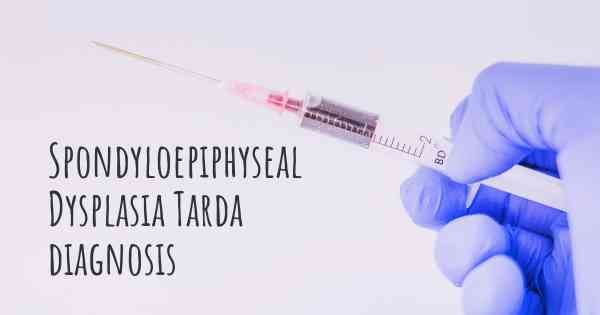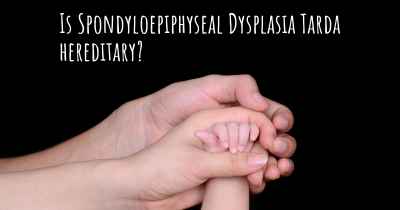How is Spondyloepiphyseal Dysplasia Tarda diagnosed?
See how Spondyloepiphyseal Dysplasia Tarda is diagnosed. Which specialists are essential to meet, what tests are needed and other useful information for the diagnosis of Spondyloepiphyseal Dysplasia Tarda

Spondyloepiphyseal dysplasia tarda (SEDT) is a rare genetic disorder that affects bone and cartilage development. It is characterized by short stature, abnormal curvature of the spine, and skeletal abnormalities. Diagnosing SEDT involves a combination of clinical evaluation, radiographic imaging, and genetic testing.
Clinical Evaluation:
During a clinical evaluation, a healthcare professional will assess the individual's medical history, physical characteristics, and symptoms. They will look for signs of short stature, abnormal spinal curvature, joint stiffness, and other skeletal abnormalities. The evaluation may also involve assessing the individual's mobility, joint range of motion, and any associated symptoms such as pain or difficulty walking.
Radiographic Imaging:
Radiographic imaging plays a crucial role in diagnosing SEDT. X-rays are commonly used to evaluate the skeletal system and identify characteristic abnormalities associated with SEDT. The most common findings include abnormal spinal curvature (kyphosis and scoliosis), flattened vertebrae, irregular growth plates, and changes in the shape and structure of the long bones. These radiographic findings help differentiate SEDT from other skeletal dysplasias.
Genetic Testing:
Genetic testing is the most definitive method for diagnosing SEDT. It involves analyzing the individual's DNA to identify specific genetic mutations associated with the disorder. The most common genetic mutation associated with SEDT is a mutation in the COL2A1 gene, which provides instructions for producing type II collagen, a protein essential for normal bone and cartilage development. Genetic testing can be performed using various techniques, including targeted mutation analysis, gene sequencing, or gene panel testing.
Other Diagnostic Considerations:
While clinical evaluation, radiographic imaging, and genetic testing are the primary methods for diagnosing SEDT, healthcare professionals may also consider other factors. They may evaluate the individual's growth patterns over time, assess family history for similar skeletal abnormalities, and rule out other conditions that may present with similar symptoms. Additionally, biochemical tests may be conducted to assess collagen production or other related metabolic abnormalities.
Conclusion:
Diagnosing Spondyloepiphyseal dysplasia tarda involves a comprehensive approach that combines clinical evaluation, radiographic imaging, and genetic testing. The clinical evaluation helps identify physical characteristics and symptoms associated with the disorder, while radiographic imaging reveals characteristic skeletal abnormalities. Genetic testing, particularly for mutations in the COL2A1 gene, provides a definitive diagnosis. Considering other factors such as growth patterns, family history, and ruling out other conditions further supports the diagnosis. Early diagnosis is crucial for appropriate management and treatment of SEDT.
Posted Sep 29, 2017 by loslolindsay 1400
Posted Oct 29, 2017 by Vegeta 1000








